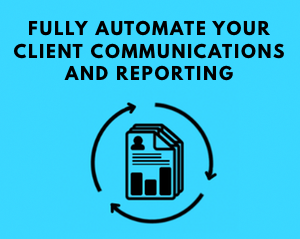We firstly need to consider how broad or how much of the reporting process and client communications the automation should cover. For an efficient model the automation should cover all the key elements required in the preparation, production and publication of client reports and communications. Otherwise there will be a bottleneck that hampers the process and delays the reports.

Remember, the process is only as strong as the weakest link. End-to-end automation should include:
- Straight-through data collection and ingestion
- Automated data validation processes to highlight exceptions in the data
- Automated scheduling – to produce reports for any frequency and also ad-hoc reporting
- Integrated commentary management; automated collection and inclusion on the report
- Dynamic report rendering flexing by client, fund, content, data, region/language and rules
- Fully automated audit trail
- Automated distribution and storage of the completed reports
There should be no manual processes or procedures within the entire end-to-end process. With a fully automated model the reporting team become insensitive to the reporting volumes and reporting frequencies and also are insensitive to the complexity of the reports.
A key element within the automated client communications process is the requirement to have a highly flexible report “template” that can dynamically flex depending on the client, the fund, the data, the commentary, language, region and EVERY piece of content required on the output reports WITHOUT any manual intervention or labour-intensive update.
- 1. With a fully automated end-to-end reporting solution the reporting team can simply and easily produce the required client reports with the agreed content, within the agreed timeframes, and also have time to provide higher levels of client service both internally and externally.
- 2. The quality and content of the reports can be assured every time, without additional manual checks and delays.
- 3. A full audit trail exists for every step in the entire process, from the data used, through the content contributions, report review, sign off and distribution activities.
- 4. The business is future proofed for increased scale, additional reporting requirements and additional reporting complexity without the need to add more people to the team.
Opus Nebula provide a fully automated end-to-end reporting solution, integrated to your data sources, producing reports to your precise specification and layout for your clients. The service is cloud based, securely hosted in the Microsoft Azure cloud. With fixed set-up costs and a pay per use model for on-going report production. ON boarding to the service is typically 4-6 weeks. Cloud based reporting – Reporting as a Service – represents the future model for client reporting and automated client communications.
For more information about Reporting as a Service please visit www.opus-nebula.com or email [email protected].
Andrew Sherlock
Opus Nebula

